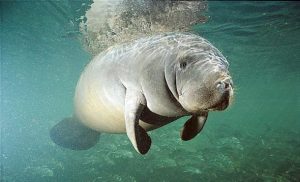
Five rangers and a driver have been killed in an ambush in Virunga national parkin Democratic Republic of the Congo (DRC).
A sixth ranger was injured in the attack on Monday that took place in the central section of the vast reserve, known globally for its population of rare mountain gorillas.
The loss of life was the worst in the history of the national park, where more than 170 rangers have died protecting animals over the last 20 years.
The rising toll has earned the park a reputation as one of the most dangerous conservation projects in the world. Last August, five rangers were killed when local militia attacked their post in the northern part of the park on the shores of Lake Edward.
A statement from Virunga described “deep sadness” following the ambush.
“We are profoundly saddened by the loss of our colleagues. Virunga has lost some extraordinarily brave rangers who were deeply committed to working in service of their communities. It is unacceptable that Virunga’s rangers continue to pay the highest price in defence of our common heritage,” said Emmanuel de Merode, the chief warden.
Virunga national park is located in DRC’s unstable North Kivu province. It covers 7,800 square kilometres (3,011 miles)
Multiple threats face Virunga, home to one of the world’s largest populations of critically endangered mountain gorillas as well as hundreds of other rare species.
There are armed rebel groups, local bandits and self-defence “Mai Mai” militia, and poachers. There is also a hugely lucrative charcoal industry, for which the trees of the park are the principal raw material.
Officials at the park say they believe the attack was by Mai Mai.
In recent months DRC has veered close to a plunge back into the appalling violence of the 1997-2003 civil war, which led to the deaths of 5 million and a significant loss of wildlife in the national park, Africa’s oldest. Observers hope catastrophe will be avoided but aid agencies describe DRC as “on a cliff edge”.
The rangers are recruited from villages surrounding the park. Most are married with many children. All those who died on Monday were aged between 22 and 30.
Virunga, founded in 1925 by Belgian colonial authorities, struggled in the immediate aftermath of the country’s independence in 1960 but flourished under president Mobutu Sese Seko, the flamboyant, wasteful and authoritarian ruler who took power in 1965.
The park suffered during the civil war which followed Mobutu’s chaotic fall in 1997 after ruling the country for 31 years. Virunga’s mountain gorilla population sank to 300.
In 2007 a partnership was established between a charity funded by private donors, the European Union, the Howard G Buffett foundation and the Congolese wildlife service. De Merode, a Belgian aristocrat, took charge and implemented wide-ranging reforms.
The rangers are now paid a monthly salary of $250, a sizeable sum locally.
Initiatives have focused on local communities, with micro loans and hydroelectric power projects to boost the local economy.
The mountain gorilla population now stands at more than 1,000, while the numbers of other animals, such as forest elephants, is also rising, and tourists are returning in significant numbers.
source by://theguardian.com




 d by journalism project Orb Media to analyse the bottled water.
d by journalism project Orb Media to analyse the bottled water.












